Bone Conductive Hearing Aids (BCHAs) come in a wide variety of shapes and sizes but all are designed to achieve the same goal. To pick up sound, convert that sound into a vibration and transmit that vibration to the small bones and cochlea of the middle and inner ear.
All of these devices will have an external component that will be worn against the head, but can be removed when not required. Yet some, more advanced devices, will also have an internal component that has been implanted and fixed to the skull. This part is permanent and can not be removed by the user.
External Hearing Devices
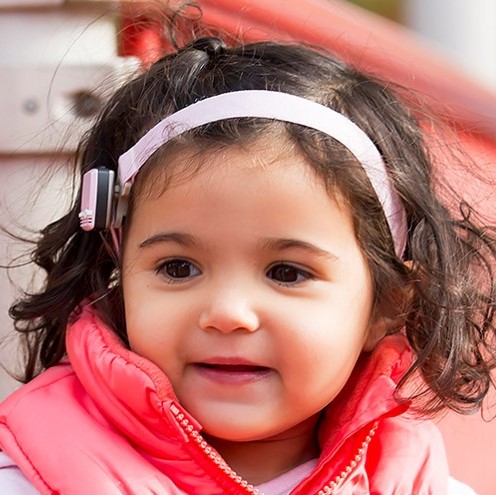
Softband – the Softband is likely to be the first hearing device a child with microtia is going to try. The external processor picks up sound and converts it into a light vibration that will travel across the skin, through the skull, then on to the small bones of the middle ear and cochlea. It allows the child to experience hearing from their affected side. For children born with one sided conductive hearing loss, the device may not be offered until there is thought to be a significant need, whereas children born with both ear canals affected, the Softband will be provided within the first year. More information on the Softband can be found on the Cochlear website.
SoundArc – The SoundArc works in much the same way as the Softband but with the majority of the device being worn toward the back of the head, making it less eyecatching. This can be a more attractive option for older children who aren’t interested in having a surgical implant but enjoy the benefit of a hearing aid. More information on the Sound Arc can be found on the Cochlear Website
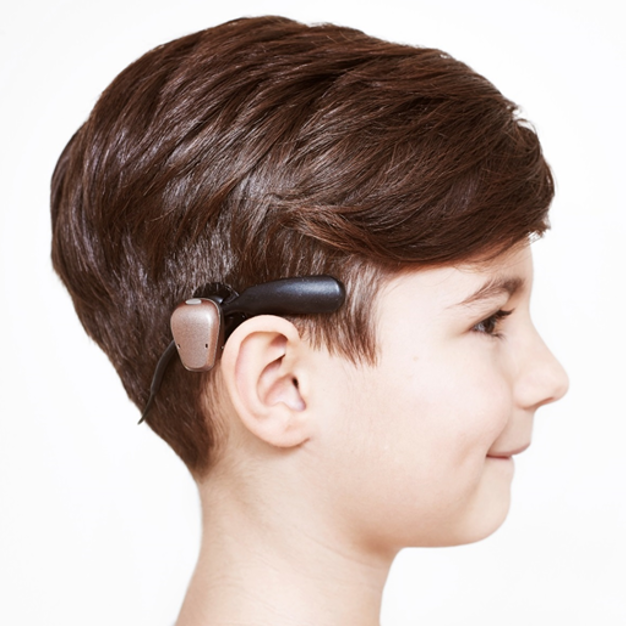
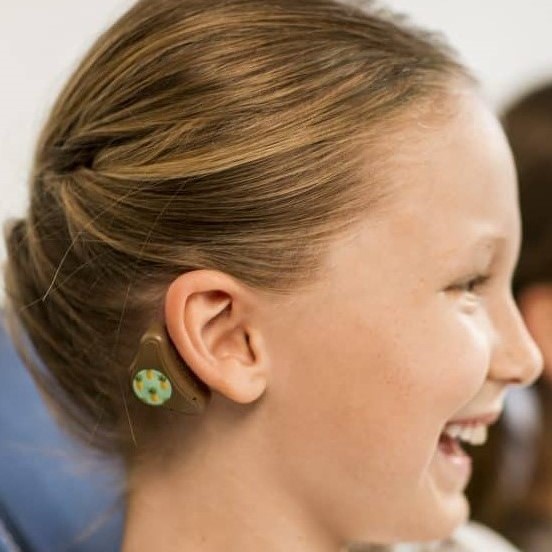
ADHEAR – The ADHEAR works in the same way again, but instead of being held on a band or plastic arc, it is held on to the skin directly behind the ear with a mild temporary adhesive sticker. This is arguably the most discreet of the non-surgical BCHAs but isn’t perfect for everybody. More information on the Sound Arc can be found on the MED-EL website
Implantable Hearing Devices
The following hearing aid options all involve surgery where a device is implanted into the bone of the skull, with an audio processor worn on the skin. The devices work in slightly different ways and provide different quality of sound to the user. A CT scan would be required to tell us which device would best work for you.
BAHA Connect – this implantable device is one of the simpler hearing implants we can offer. A small screw is placed into the bone of the skull at the side of the head and then a further metal stud or “abutment” is attached to the screw that protrudes through the skin. The external processor then attaches to the abutment. Any sound picked up by the processor will send a wave of vibrations to the bones of hearing and cochlea. More information of the BAHA Connect can be found on the Cochlear website
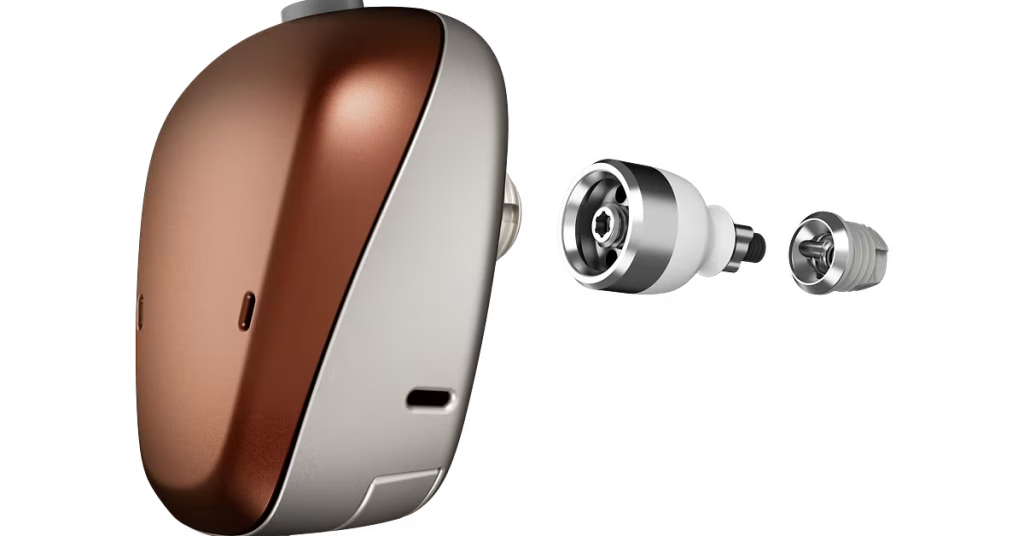
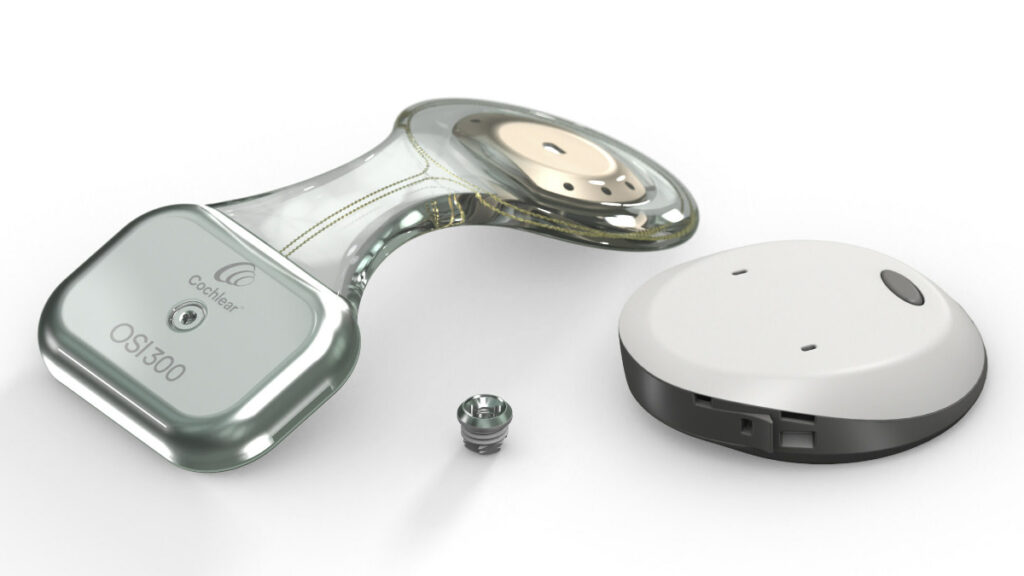
OSIA – the main difference between the Osia and the BAHA Connect is that there is nothing left poking through the skin. The Osia implant is completely buried under the skin, with the external processor being held on to the head via a magnet. Sounds received by the external processor are sent as an signal across the skin and cause the implant to vibrate. More information on this can be found here.
Bonebridge – this device works in a similar way to the Osia, with internal and external components that use magnets, but is thought to provide a better quality of sound. However, given its larger size, not everyone is necessarily going to be a suitable candidate for this device. More information can be found on the Med-El website.
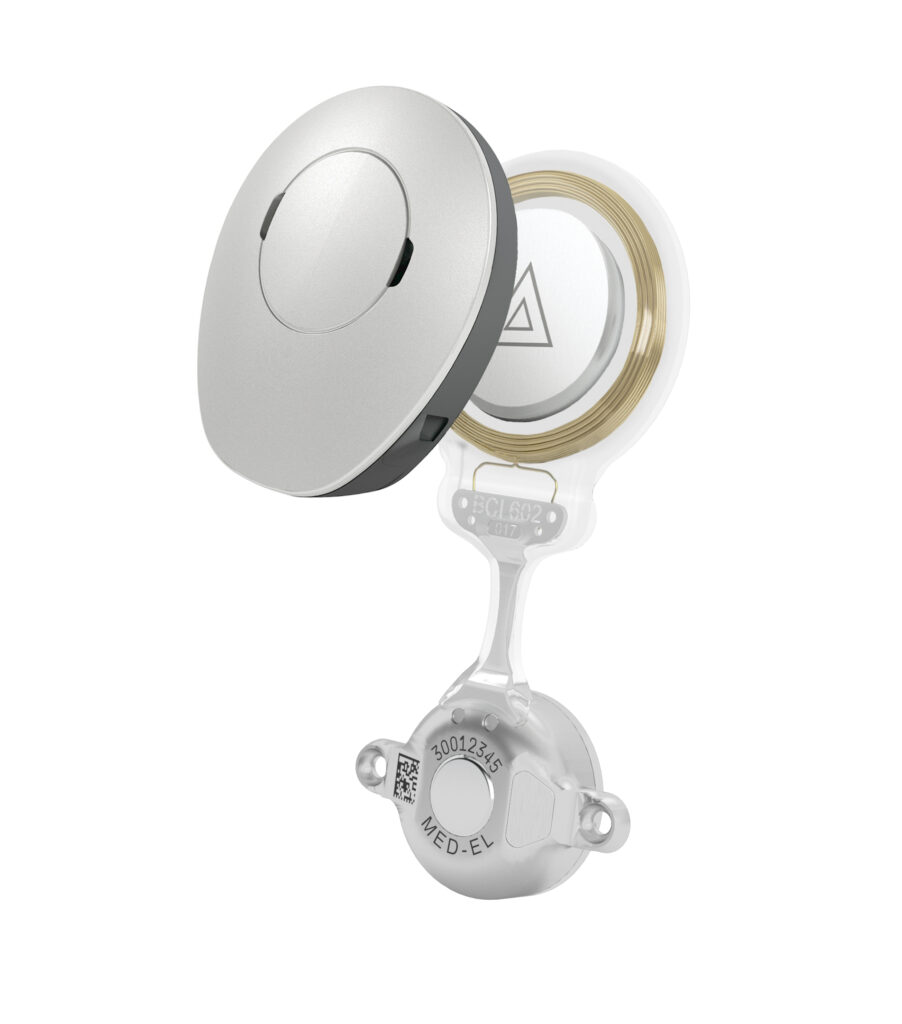
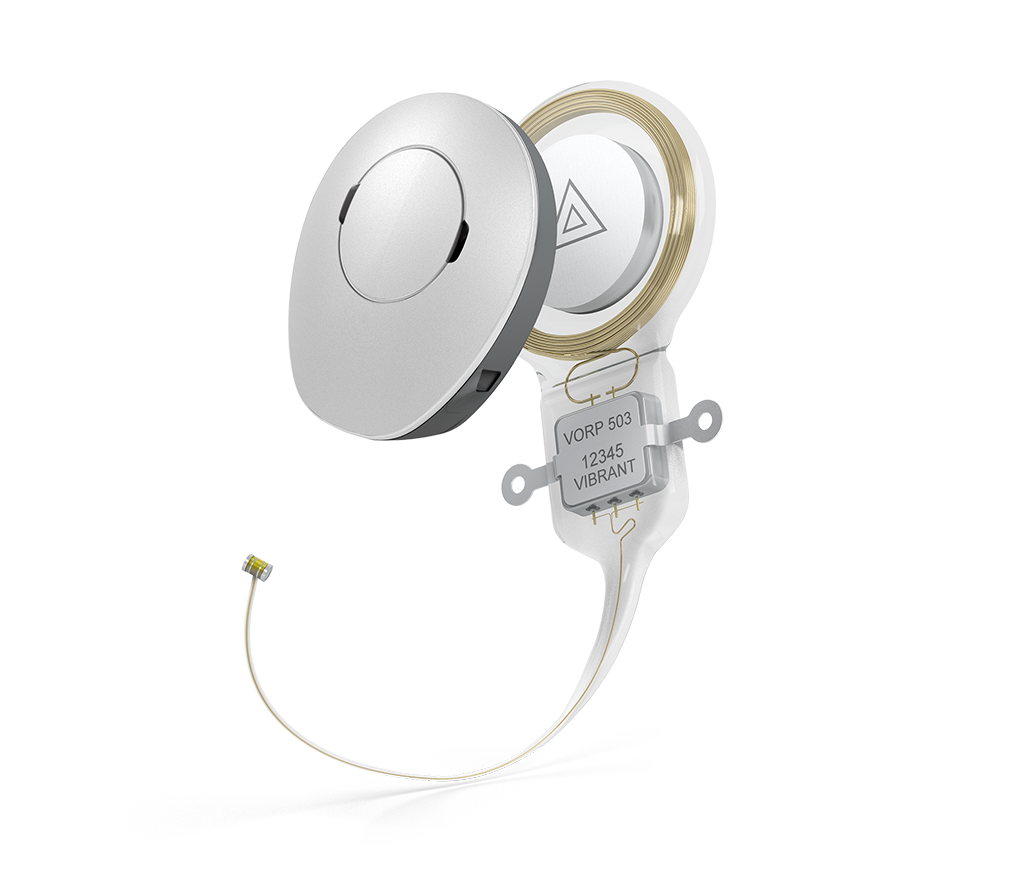
Vibrant Soundbridge – this device, the most technologically advanced we can offer, works by sending vibrations down a small wire that is clipped on to one of the small bones of hearing in the middle ear. This ensures that any sound picked up by the external processor will be sent directly to the affected ear and is thought to provide the best quality of sound of any of the devices we provide. For more information of how this works please go to the Med-El website.














